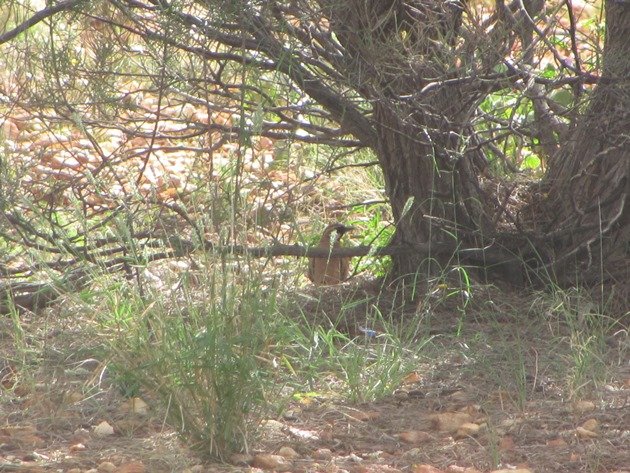
Last month we were driving south from Wiluna towards Lake Miranda when the sky became very threatening late in the afternoon. Our original plan had been to travel off-road for some distance to camp, but we were able to pick up a mobile phone signal and checked the weather warnings. Our plans had to change! The rain radar did not look good and there was also a severe weather warning that included everything from hail to strong winds to the south. We rarely back track, but on this occasion it was the only sensible thing to do. The sky had been blue when we had left Wiluna a few hours earlier and there was no indication of what was likely to happen to the weather later in the day, but we had pulled in at a rest area about 55kms/34 miles south of the town to investigate the facilities. There were a few rubbish bins and a shelter with a picnic table and benches. What we had seen in the rest area was our first Hooded Robin for the year and the roads were empty, so highly likely we would have the rest area to ourselves and a few birds! The landscape was quite spectacular with the approaching storm as we attempted to outrun it!
Storm over breakaway country
Returning to the rest area we were soon set up under the shelter with the storm all around us, but mostly raining in the distance and the occasional flurry of wind. The rain only fell briefly and then swung around and we enjoyed a spectacular sunset with the rain falling through the last of the light. Grey Butcherbirds, Crested Bellbirds, Torresian Crows and Willie Wagtails were around our camp and a Tawny Frogmouth started to call after the sun went down.
Rain in the sunset
The following morning it was cool and we decided to get some exercise before heading south once again. The most common birds in the arid open area were Australasian Pipits, White-winged Trillers and Crimson Chats. We also observed a Black-eared Cuckoo, several Singing Honeyeaters, Rufous Whistlers and a pair of Western Magpies and a Brown Falcon soaring overhead. The dead trees in the area were perfect roosts for the Masked Woodswallows and the Black-faced Woodswallows and we were soon stopping to observe the tiny Yellow-rumped Thornbills flitting between the other shrubs in the area. Just as we were completing our walk around the bush I noticed a small amount of movement at the base of a tree and stopped Grant from proceeding. We had come across a Western Quail-thrush, which was extremely well camouflaged among the bushes, rocks and the colour of the dirt almost matched its feathers identically! This is where I have the dilemma where I want to look at the bird, appreciate what the bird is doing in its surroundings, photograph the bird and appreciate the limitations of a small camera! The Western Quail-thrush was actually rather more interested in feeding than the presence of ourselves, but it also meant it kept moving through the bush and made the challenge of photographing it even more real!
Western Quail-thrush-oh dear, you can’t see the head!
I moved slowly around to see if I could get a better photo of the Western Quail-thrush, but it didn’t want to look at me!
Western Quail-thrush
The Western Quail-thrush continued to feed! It blended in well with its surroundings and it was not concerned about us at all.
Western Quail-thrush feeding
The Western Quail-thrush then called out and I captured that moment! No doubt there was another one nearby also feeding on the rocky substrate.
Western Quail-thrush calling
I followed the Western Quail-thrush around the rocks and it continued to take little interest in my presence, but it also kept moving and feeding and the vegetation was problematic!
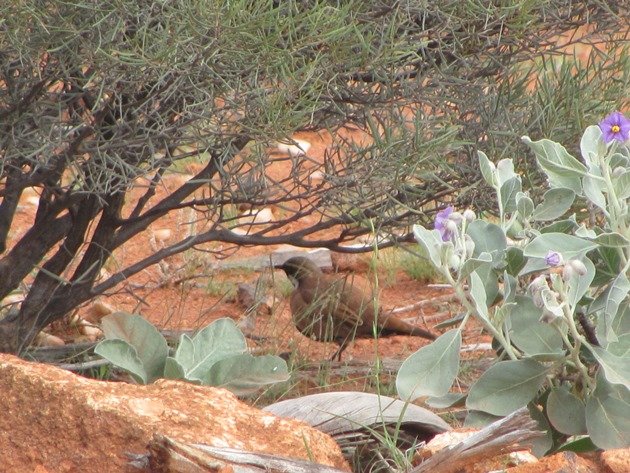
Western Quail-thrush
Finally the Western Quail-thrush stopped momentarily and sat briefly. The light was bad, but it offered views of the bird that I had not achieved yet! I had been constantly swapping between binoculars and camera appreciating the moment with both! It was a gorgeous bird to find on a walk in the bush before heading south once again.
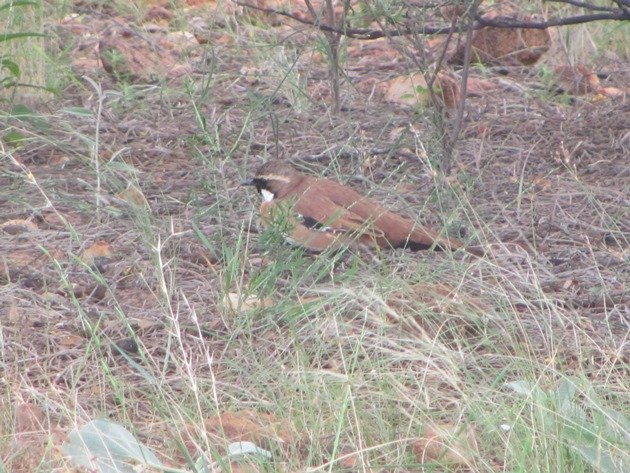
Western Quail-thrush
We had definitely made the correct decision to back track the afternoon before judging by the heavily flooded land to the south. It was no longer possible to leave the bitumen now the land was saturated and it was evident that there had been very good rains in the area for the last few months. In fact when we got to Lake Miranda this year it was so full that there were very few birds at all. There were no Banded Stilt at all and only a few Red-necked Avocets. The last member of the Quail-thrush family we had seen was the Chestnut-backed Quail-thrush at Burra Rock Conservation Reserve last year. We had one other encounter with a Western Quail-thrush last month and that was at a rest area to the east of Sandstone, but it was nowhere near as obliging when it came to trying to photograph it! This particular Western Quail-thrush was tricky enough!




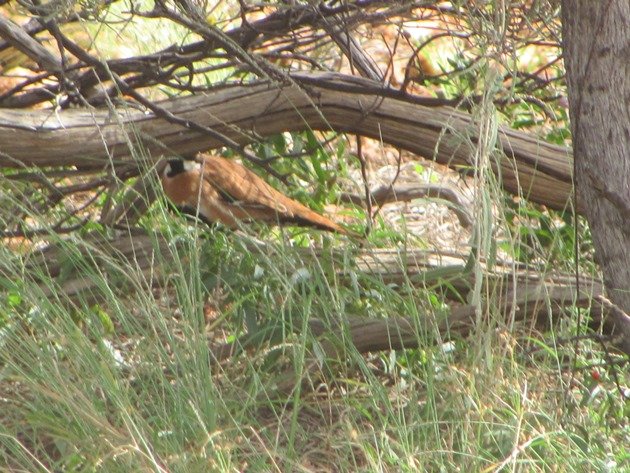
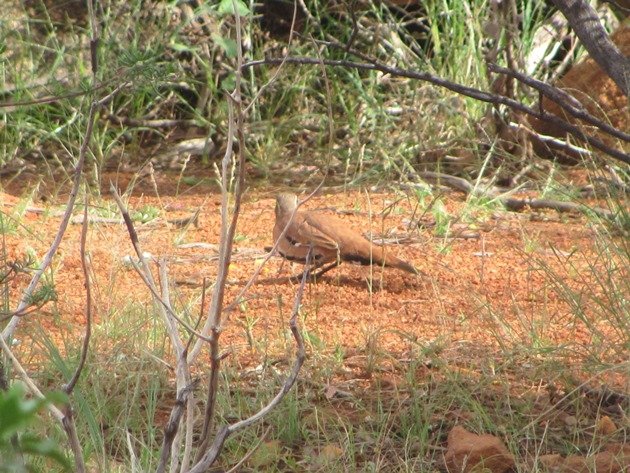
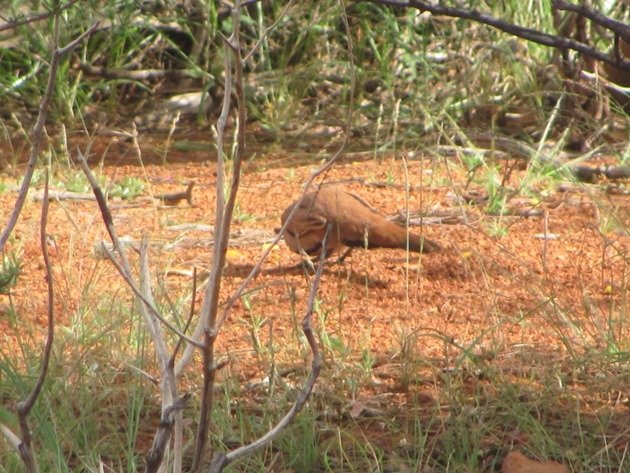
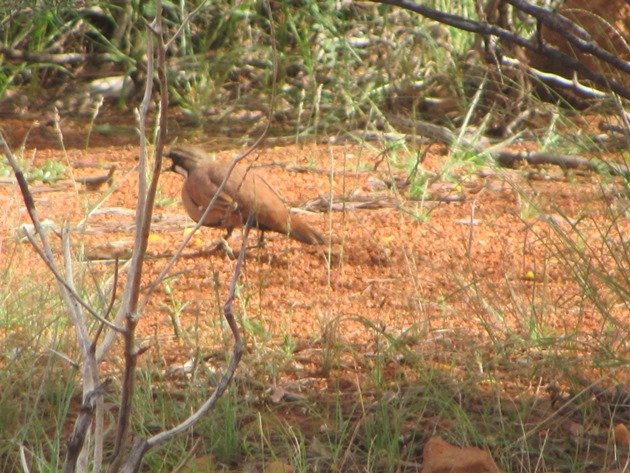
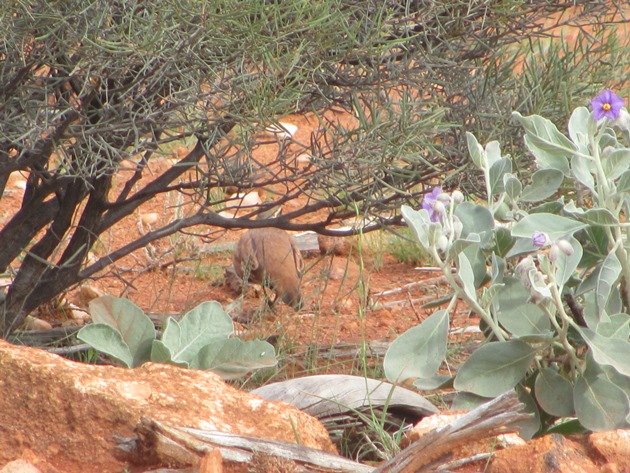










Leave a Comment